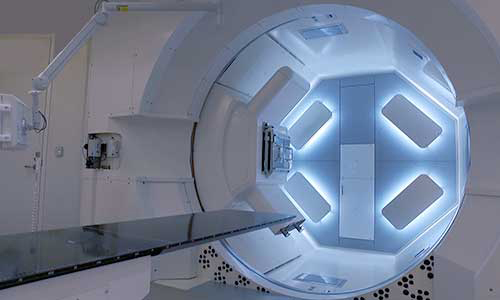Lung Cancer Treatment
What You Need to Know
- Treatment for lung cancer varies according to age, type of cancer, extent of disease, tolerance to medication and patient preference.
- Treatment options include a combination of surgery, radiation, chemotherapy, immunotherapy and targeted therapy.
Specific treatment for lung cancer will be determined by your doctor based on:
- Age, overall health and medical history
- The type of lung cancer
- Extent of the disease
- Your tolerance for specific medications, procedures or therapies
- Expectations for the course of the disease
- Your opinion or preference
Depending on its type and stage, lung cancer may be treated with surgery, chemotherapy or other medications, radiation therapy, local treatments such as laser therapy, or a combination of treatments. Combination treatment or multimodality treatment refers to having more than one type of treatment.
Treatment for lung cancer includes one or more of the following approaches.
Surgery
Surgery is part of the treatment for early-stage lung cancers. The type of surgery depends on the size and location of the tumor in the lung, the extent of the cancer, the general health of the patient and other factors. Many surgeries are done with a long incision in the side of the chest, known as a thoracotomy. Some early stage tumors may be treated with video-assisted thoracic surgery (VATS), which uses several small incisions (instead of one large one) and special long surgical tools.
Types of surgery include:
- Segmental or wedge resection: Removal of only a small part of the lung
- Lobectomy: Removal of an entire lobe of the lung
- Pneumonectomy: Removal of an entire lung
- Sleeve resection: Removal of a piece of bronchus, after which the lung is reattached to the remaining part of the bronchus
Radiation Therapy
Radiation therapy is the use of high-energy radiation to kill cancer cells and to shrink tumors. Radiation may also be used with chemotherapy to treat lung cancer. The following techniques are used to deliver radiation therapy:
External radiation (external beam therapy): A treatment that precisely sends high levels of radiation directly to the cancer cells. The machine is controlled by the radiation therapist. Because radiation is used to kill cancer cells and to shrink tumors, special shields may be used to protect the tissue surrounding the treatment area. Radiation treatments are painless and usually last a few minutes.
Chemotherapy
Whereas surgery and radiation treatment are focused at only one area of the body, chemotherapy goes throughout the body to search for tumor cells. Chemotherapy is given through an IV infusion, in most cases. chemotherapy works by interfering with the cancer cells’ ability to grow or reproduce. Different groups of drugs work in different ways to fight cancer cells. The oncologist will recommend a treatment plan for each individual. Chemotherapy may be given before other treatments, after other treatments or alone for lung cancer.
Targeted Therapy
Targeted therapy is like chemotherapy in that it goes throughout the body in search of tumor cells. These are drugs that target specific parts of cancer cells or nearby cells that help them grow. So far, these drugs have only been found to be useful for some non-small cell lung cancers. For example, as cancers grow, they form new blood vessels that nourish them. It is used with the standard chemotherapy regimen. Medications with other specific targets, such as crizotinib, erlotinib and cetuximab, may also be useful.
There are specific names for the order in which treatment is given. Neoadjuvant treatment refers to having radiation or chemotherapy before surgery. Having one or both of these before surgery may help shrink the tumor, as a smaller tumor is easier to take out in surgery.
Chemotherapy or radiation soon after surgery is called adjuvant treatment. The goal of adjuvant treatment is to kill any cancer cells that may be left after the surgery. Even if there is no sign of cancer cells, your doctor may suggest adjuvant treatment, as it may lower the risk that the cancer will come back or spread.
Clinical trials are being conducted on prevention and treatment options for lung cancer, including photodynamic therapy and chemoprevention.
Immunotherapy
Immunotherapy is a new cancer treatment approach that uses drugs, vaccines and other therapies to activate the immune system’s natural defenses so it can fight cancer. One type of immunotherapy drug, called “anti-PD-1” has been shown to cause significant tumor regression in a quarter of patients who receive it after a round of chemotherapy.Three immunotherapy drugs—pembrolizumab, atezolizumab and nivolumab—have been approved to treat certain non-small cell lung cancers.
The Johns Hopkins Proton Therapy Center

Proton therapy is used to treat certain tumors in children and adults. Our treatment center, located at Sibley Memorial Hospital in Washington, D.C., combines advanced proton therapy technology, the latest research and caring specialists.






